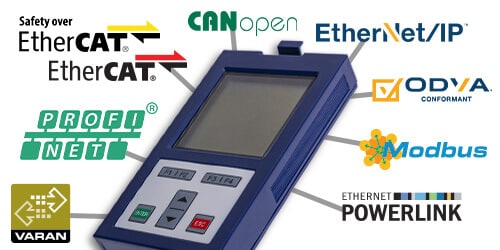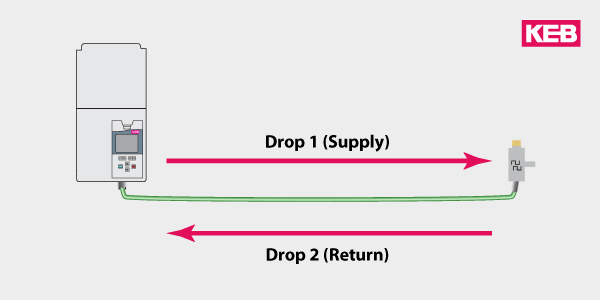What can KEB offer that one of the big automation suppliers cannot (or will not)?
This is a reasonable and fair question. This posts talks a bit about one of the differences – that KEB drives are communication agnostic and can interface with nearly every major PLC platform. This flexibility is important for global machine builders and ultimately reduces development time and support costs.

Different Communication Protocols – A new tower of Babel
Machine builders are increasingly playing in a global sandbox. Their machines are going to every corner of the globe. Shipping machines internationally introduces new challenges like how can I remotely service my machine. Another common challenge is meeting the demand to offer different PLC vendors.
Different geographies often have strong brand preferences for automation components and their associated communication protocols. For example, in North America, the leader by market share is Rockwell Automation which pushes EtherNet/IP. In Europe and most of the rest of the world, it is Siemens pushing ProfiNet. But Schneider, Mitsubishi, and Omron also have their market share too.

The reality for many machine builders is if you want to sell globally then you must offer different machine variants built with different brands of PLCs – each communicating with their own protocol. At a minimum, I often see customers offering at least an Allen-Bradley machine for the US and a Siemens machine for Europe. Increasingly, machine builders are also using real-time industrial protocols like EtherCAT if the machine performance is demanding and requires it.
OEM Headaches
Designing for and supporting different communication protocols is a pain. It will require different software license seats. Each programming software has its own nuances, features, and limitations. Multiple designs require extra documentation and add another variant to be supported once the machine ships.
One particular challenge, regarding VFDs, is to maintain consistent motor shaft performance across different drive platforms.
For basic applications like a pump or fan, motor shaft performance is not that important. But motor shaft performance is critical for difficult motion control applications. An OEM might find that Brand A offers good performance, but Brand B is unacceptable. At a minimum, the drive platforms will have different gains and motor learn procedures that must be handled individually.
KEB’s x6 Application Control Card
As a company, KEB is by no means small, but we have never been the biggest either. This means that historically, we have had to adapt and interface with all other control manufacturers. For example, the F5 drive platform supports 10+ communication protocols through modular keypads.

Newer drives like the S6 Servo Drive and F6 VFD are really exciting because they feature built-in Ethernet communication which supports a number of leading industrial protocols, including: EtherNet/IP, EtherCAT, ProfiNet, Powerlink, etc.
One piece of hardware and part number supports all these different communication protocols with a simple parameter change in the drive.
Sounds great … but what is the benefit to Machine Builders?
The Operations Manager will be happy because they can offer different machines with multiple PLC/controls platforms but they can standardize on and stock only one drive series. Financially, this allows OEMs to consolidate SKUs, reduce inventory levels, and free up cashflow.
The Service Manager and Field Engineer’s lives are also simplified due to the reduced SKU number. This means there should also be a higher level of serviceability for machines already in the field. One stocked spare part can cover multiple machines.
Engineers are happy because they benefit from KEB’s broad drive product lineup and innovative technology, like: Encoderless positioning, multi-motor operation, and Liquid Cooled heatsinks.

Only one piece of drive software is required – for KEB, this is Combivis.

The drive panel layout and hole patterns can be standardized which will allow for optimization of wiring layout.
Most importantly, the motor shaft performance, especially in demanding applications, will be consistent across the different machines.

Each communication protocol in the drive will have its own communication-specific parameters like baud rate, control word, etc. But the parameters related to motor performance like speed gains, motor model parameters, protection features, brake handling, etc. will all remain the same. This greatly simplifies the development and support of the drives.
Let's Work Together
Connect with us today to learn more about our industrial automation solutions—and how to commission them for your application.




